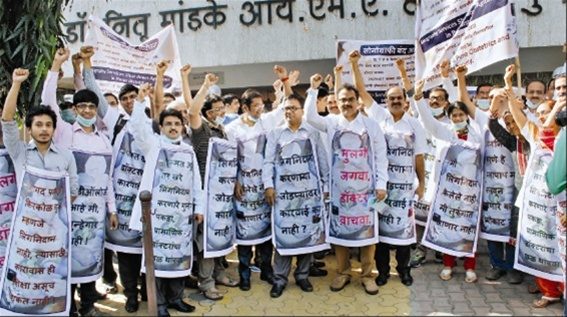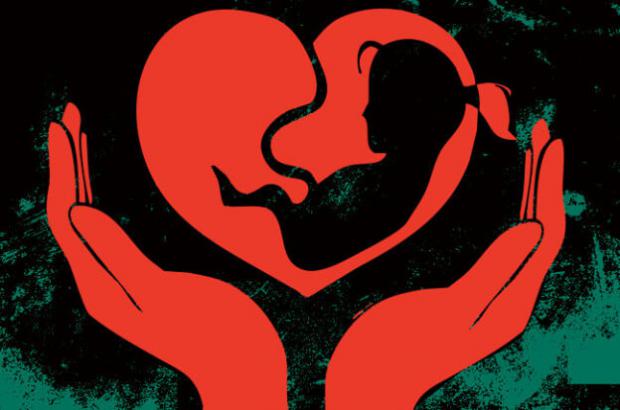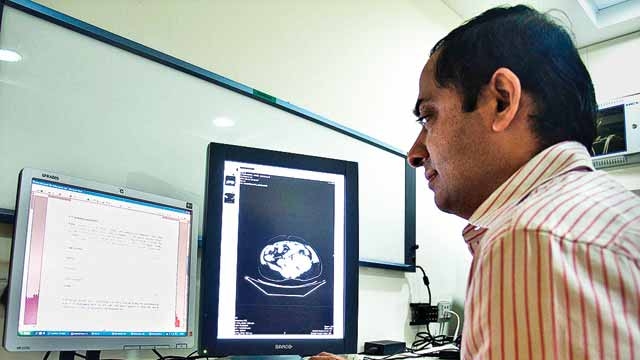
Radiologists in Pune are on an indefinite strike from Tuesday as a protest against what’s said to be the high-handed approach of the Pune Municipal Corporation(PMC) in implementing the PC-PNDT(Pre-Conception and Pre Natal Diagnostic Techniques) Act.
The Maharashtra state branch of the Indian Radiological and Imaging Association(MSBIRIA) is also backing the Pune radiologists. They said they will suspend all radiological services in the state on June 14.
Also, from Wednesday the radiologists in Pune will continue their strike by suspending just ultrasound sonography services indefinitely in private diagnostic centres, clinics and hospitals. But emergency services won’t be denied to admitted patients or out-patients.
Government health care centres won’t partake in the strike.
A recent case of the act being hastily used without due consideration of facts
Many radiologists and professionals in the medical fraternity point out the case of radiologist Ashutosh Jape’s as a recent example of someone being victimised with the PC-PNDT act.
Jape diagnosed rightly meningocele in a pregnant patient. As a result, the medical termination of pregnancy was conducted on the patient. However, trouble found Jape when it was thought to be an instance of female foeticide. The authorities were quick to act by sealing Japes’ three sonography machines on the 5th of April.
Investigations that followed made it clear that the decision was one made in haste. Even though the state unit has brought to the government authorities’ note that Jape’s prosecution was unfair and in violation of the PC-PNDT Act, his suffering is far from over.
The PC-PNDT Act: what to know

Though the use of the act is attracting ire, the PC-PNDT act is rooted in honorouble objectives.
The act which came into being in 1994 was enacted to prevent female foeticides and also curb the decline of sex ratio in the subcontinent.
It was devised in the 1990s, in the backdrop of a disturbing trend which arose when ultrasound techniques were becoming widely used in Indian medical practices: families saw in it a way to determine the sex of the yet-to-be-born and kill it if it’s a female. A preference for a male child is deeply embedded in the Indian culture.
The aforementioned trend saw a rise in female foeticide and a skewed sex ratio that had the male dominating the female in numbers. In the 0 to 6 age group in the country, there were 104.0 males per 100 females in 1981. The ratio worsened to 105.8 in 1991 and 107.8 in 2001. In 2011 the ratio was recorded as 109.4.
But that’s on the national level. The ratio is significantly higher in some of the Indian states. For instance, Punjab and Haryana had a ratio of 126.1 and 122.0 respectively(as per census data from 2001).
The act which prevents sex selection technique thus makes judicial sense.
Salient features of the act:
The act considers the following as offenses: either conducting or helping to conduct a prenatal diagnostic technique in unregistered units, conducting a PND test for purposes other than the one which the act mentions, sex selection and sale, distribution, renting etc. of ultrasound machine or any equipment with which foetal sex can be determined.
The act also regulates the use of many pre-natal diagnostic techniques including the ultrasound and amniocentesis. It also prohibits anyone who conducts a sex-determination procedure to communicate the sex of the foetus to the pregnant woman or her relatives by any means. Also, putting out advertisements for pre-natal or pre-conception sex determination facilities is a punishable offence under the act.
Amendment was made to the act in 2003 which made it even more stringent.
How the act could act against the radiologists

The possibility of the act being detrimental to innocent radiologists and like professionals is well reflected in the words of Vaishali Jadhav-the appropriate authority who is entrusted to ensure the act’s effective implementation in Pune city. She was also the authority in the Jape case. Vaishali Jadhav says that they function “within the legal framework of the PC-PNDT Act” and that it’s their “duty to see that the law is followed in letter and spirit.”
But those in the medical fraternity cannot digest the fact that following the law in spirit seems like attempts at breaking the spirit of innocent radiologists.
The grossly inadequate number of government facilities means that healthcare in the subcontinent is heavily dependent on small and medium size medical centres. That being the case, if the professionals working in such places cannot practise without fear, it makes matters worse. That’s one concern which is raised by many.
The ongoing strike makes it clear that the authority’s use of the act on many instances is seen as a harassment. And that things have come to a boiling point is another fact one must surmise from this suspension of services. But will it be enough for the relevant authorities to assess the situation with the required detachment and maturity remains to be seen.
Image credits: dnainida, nic.in, indianexpress